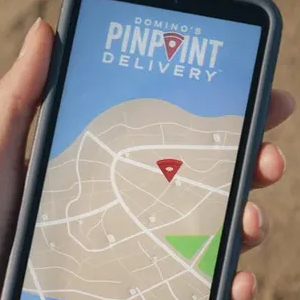A scan of the food news wires these days yields an interesting insight. But you have to read between the lines. For the demographics that use Fast Food and Food Delivery services the most, convenience has taken precedence over the food itself…
 Chick-Fil-A ‘Resto Of The Future’ concept. Optimized for pick-up and delivery traffic…
Chick-Fil-A ‘Resto Of The Future’ concept. Optimized for pick-up and delivery traffic…
Submitted for your approval: Millennials, Xs and Zs are widely considered the most enthusiastic proponents of convenience and immediate gratification in their dining and other consumer habits. They have been shown, in multiple surveys, to be the most-frequent users of Fast Food and Food Delivery services.
These demographics are quickly becoming the dominant consumer force behind Western economies. And as such, they’re tailoring the way Fast Food and Food Delivery sectors are shaping their business models.
Here’s where reading between the lines reveals the story…
Case Study: UBER Eats customers
The 2023 UBER Eats Cravings Report listed one particularly telling customer quote:
“It’s for my cat!”
One guesses that the customer thought her request would be deemed suspiciously over-the-top – maybe even some kind of prank – if UBER staff thought it was for her, herself. But she wanted what she wanted, the way she wanted it. Even though she was trepidacious about asking for it.
Other UBER Eats customers acted as though the service was there for them, and them alone:
“Put it in a box instead of a circle container. I refuse to eat any food if presented in a circle container. Please don’t ruin my meal for me.”
“I have braces and it is difficult for me to chew. Please please chop my salad and all ingredients in small, small pieces.”
Another obeservation in the UEC Report points up the reliance of some folks on delivery services for more than just food:
“We know people use Uber Eats to get their food fast, but the top 3 most popular non-food items ordered may surprise you: Scott Unscented Toilet Paper Rolls, Plan B One-Step Emergency Contraceptive, and Covid-19 Antigen Home Tests.”
Case Study: Domino’s Pinpoint Delivery
In a move that suggests the Pizza innovator now sees its delivery service as a bigger selling point than the food itself, Domino’s has instituted Pinpoint delivery. The P{indrop System l;ets you get your Domino’s order delivered wherever you are. All you have to do is drop a ‘pin’ on a Google Map of your location.
Their extravagant introductory promo stunt featured a guy in a jet suit delivering pizzas directly to folks at an outdoor concert. Although Pinpoint delivery isn’t really that accurrate. The Verge explains the limitations of the Pindrop System with graphic examples. And adds, “Sadly, though, you can’t get your pizza delivered straight to your beach chair. That’s because you’ll have to meet your driver wherever the app deems the best pickup spot for them to pull over their vehicle.
“There are some other caveats, too. You’ll only have four minutes to meet your driver — so good luck getting your pizza in time if your hiking trail or campsite isn’t close to a street.”
Case Study: Pizza Hut Late Night Delivery
The Hut has decided to extend its delivery services to accommodate late night cravers and night workers. The Hut has recently stretched its hours – at participating locations – to 2 a.m. or later.
“We saw a clear need from our guests to satisfy their cravings for Pizza Hut late at night. So, we decided to meet them where they are by keeping our doors open longer,” Chequan Lewis, the chief operating officer of Pizza Hut U.S., said in a statement. “We’re excited to provide our full menu for delivery or carryout well into the late hours, making it more convenient than ever to enjoy Pizza Hut, no matter the time.”
Their decision is confirmed as sound in at least one niche: High school and college kids. The UBER Eats Cravings report noted:
“With extracurriculars, evening study sessions and of course nights on the town, college cravings often strike after midnight. Penn State took the lead once again this year with the most late night (12-4am) orders on Uber Eats, followed by University of Iowa, University of Illinois and Texas A&M University.”
Case Study: Fast Food pushing ‘online’ HARD
Perhaps the most convincing piece of evidence that Fast Food purveyors are paying more attention to their business models than to their food is the hard sell the major brands are pushing on fans to use online and smart phone app ordering and payment systems.
You can hardly get any specials or deals any more unless you, “order online or by the app, for delivery or pick-up only.” As well, digital customers often get early access to specials and extras that non-digital customers don’t get.
The Fast Food chains really, REALLY want you to go for pick-up or delivery only” so they can implement to the max their new business model. That involves minimum in-house dining and maximum delivery and drive-thru traffic.
The plan is to build smaller, less expensive restos, cut staff costs significantly, and streamline production systems. It’s all in aid of serving more customers more quickly and defending their already thin profit margins.
My take
Just this: It’s clear that not only the younger generation customers, but also the restaurant chains that seek to keep their cravings satisfied, are concentrating more on how to do that rather than what they are serving and eating…
~ Maggie J.

